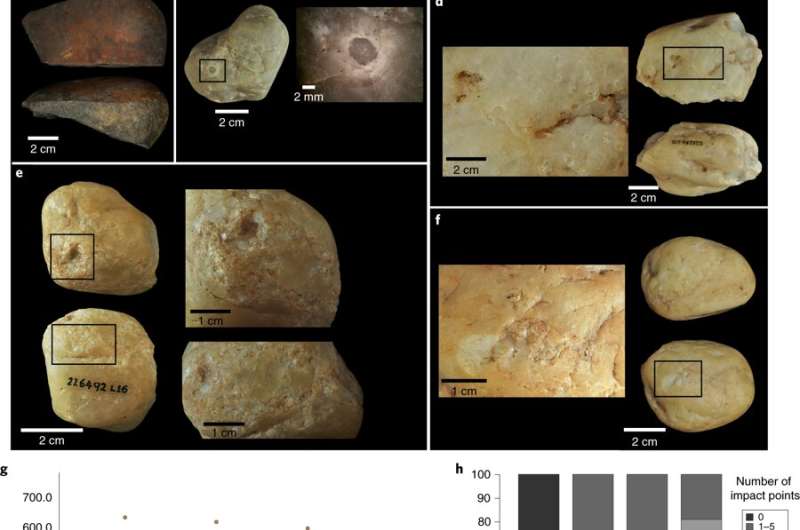June 25, 2019 report
Evidence of capuchin monkeys using tools 3000 years ago

A team of researchers affiliated with several institutions in Brazil and the U.K., has found evidence of capuchin monkeys using stone tools as far back as 3,000 years ago. In their paper published in Nature Ecology and Evolution, the group describes the archaeological dig they carried out and the stone tool artifacts they found.
Prior research has shown that chimpanzees use tools, and have done so for over 4,000 years, and other animals have been found to use tools, as well, including birds using twigs to retrieve food. The study of tool use by non-humans is still in its infancy, however, and little is yet known about its evolutionary history.
In this new effort, the researchers focused their efforts on capuchin monkeys living in Brazil's Serra da Capivara National Park. The capuchin monkeys there used quartz stones to crack open cashew nuts. The researchers note that the monkeys place the nuts on a larger stone (an anvil) or a hard tree root before bashing it with a rock. They also note that such bashing left telltale signs on both the rock used as the tool and the anvil. Also, repetitive bashing on the same anvil left brown stains from the cashew shells. This information led them to begin excavating in the same areas to see if they could find any stone artifacts with similar markings.
The researchers report that they found many artifacts going back approximately 3,000 years. They report also that the dig site represented a timeline of sorts—the deeper they dug, the further back in time they went, with increasingly older evidence of tool use. The researchers found that the size of stones used to crush food changed over time. They report that the oldest artifacts were small, and had a lot of damage—a sign that the animals using the tools missed a lot. Then, approximately 560 years ago, the animals began using larger stones—but only for a couple of hundred years. Approximately 300 years ago, the tool wielders switched again to using the size and kind of rocks that capuchin monkeys in the area use today.
The researchers assume that the early tool users were also capuchin monkeys, though there is no evidence to prove it. They suggest that the monkeys likely changed tool size over time to suit the food they were trying to process.
More information: Tiago Falótico et al. Three thousand years of wild capuchin stone tool use, Nature Ecology & Evolution (2019). DOI: 10.1038/s41559-019-0904-4
Journal information: Nature Ecology & Evolution
© 2019 Science X Network





















